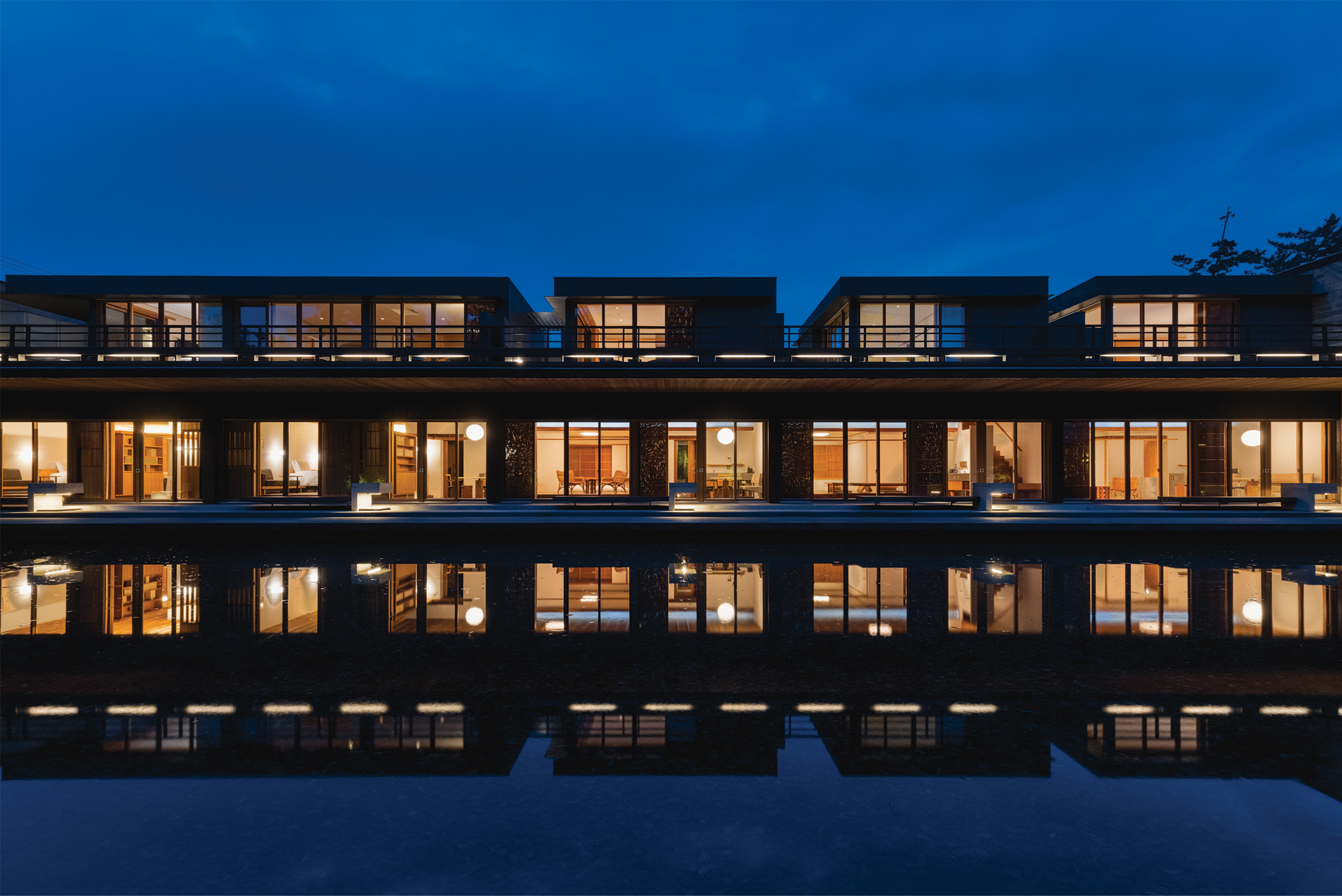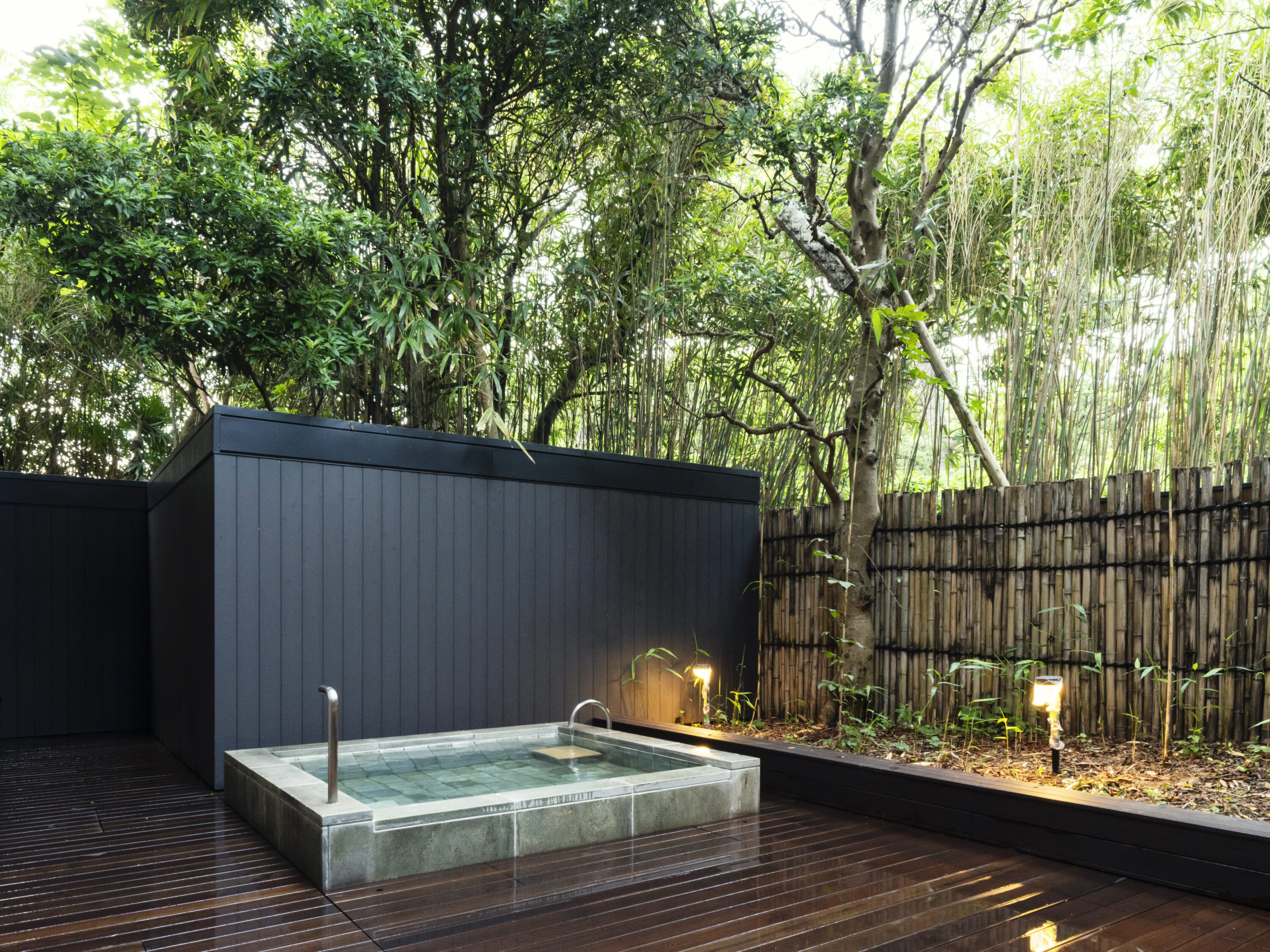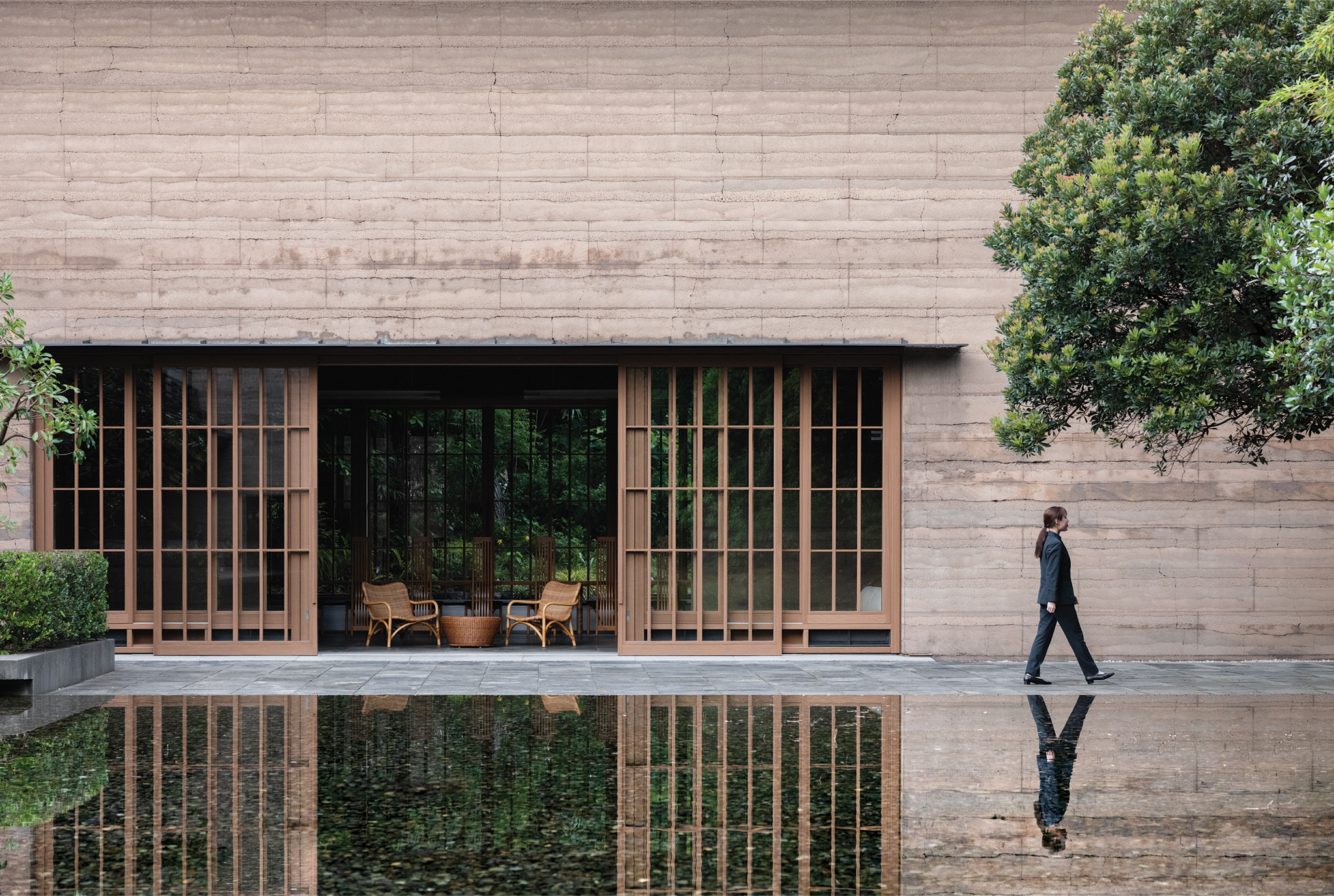A heavenly hideout surrounded by a grove of over 1,000 pine trees that have survived for centuries, Numazu Club is the ideal retreat for anyone in search of some peace and serenity. A 10-minute drive from Numazu Station, it features an enchanting sukiya-style tea house originally built in 1913 and a modern and superbly designed guesthouse complex that faces out onto a contemplative pond.

Elegant and Natural
In 2006, over a century after it was constructed, the aging teahouse was renovated. A short time after that, Numazu Club’s villa was erected adjacent to the original building. It was the last major work of the hugely respected late architect Akira Watanabe. He used a special technique involving layers of sand and dirt from Fuji River to create what is a very elegant and natural-looking complex that complements the tranquil surroundings. It is an impressive sight from the outside looking in and the interior doesn’t disappoint either.
The two-story building contains eight spacious rooms in varying styles, including a maisonette with a bedroom upstairs and an exquisitely designed suite room with an outdoor bath. There’s also a choice of Western and Japanese-style rooms. I stayed in a deluxe twin room that was both chic and comfortable. Featuring two large beds, a sofa, a Japanese cypress bath and a small kitchen, it felt like a luxury apartment. The fridge was also stocked with various kinds of alcoholic beverages that I would be making the most of later.

Soothing and Peaceful
Before getting started on that, though, it was time to unwind at Numazu Club’s spa. An elegant space featuring an indoor bath and an open-air one, the water here comes from a well within the grounds that shares the same source as the springs of the Kakita River, named one of the three cleanest streams in Japan. With no one else around, taking a dip in the outdoor bath felt both soothing and peaceful. The water is also said to have excellent cleansing properties due to being rich in minerals such as potassium and magnesium.
As for Numazu Club’s ganbanyoku (hot stone spa), that’s covered in slabs made of Bad Gastein stone, which is known to contain more far-infrared rays and negative ions than other minerals and subsequently has many health benefits. It’s particularly good for detoxifying and destressing after a hard week. In addition to the ganbanyoku, there is also a self-steaming sauna, though I was only in there for a very short time. The women’s spa, I’m told, has two saunas with different temperatures.

Numazu Club’s Historic Teahouse
As well as feeling refreshed and rejuvenated, I was now also hungry. Luckily a multicourse meal awaited. I would be eating at Chatei in Numazu Club’s historic teahouse, which is, along with the resort’s thatched-roof Nagaya gate, registered as a Tangible Cultural Property of Japan. Built more than a century ago by Zenbei Miwa, the second-generation proprietor of Mitsuwa Soap, it has been used by many prominent politicians to host meetings over the years. Though renovated in 2006, you can still feel the history of the place as soon as you walk in.
As you’d expect at a first-rate accommodation like Numazu Club, the service was immaculate throughout the meal and the food was just divine. The menu is supervised by talented chef Hirofumi Saito, who is very particular about the ingredients he chooses. Specializing in Chinese cuisine while using local ingredients, he likes to make the most of the four seasons. I had the winter version featuring some yodare chicken, shark’s fin, beef shabu shabu and tantan noodles to name but a few dishes. Each item was superbly presented and tasted just as good as it looked.

An Idyllic Garden
The food was washed down with a few glasses of wine. And then when the meal was finished, I had a few more in the room. In addition to a bottle of bubbly, there was also some local craft beer to enjoy. Waking with a slightly sore head, I began the next morning with a gentle stroll around the idyllic and spacious garden before another quick dip in the spa’s outdoor bath. I then finished my stay with an extensive Japanese breakfast back at Chatei. And just like the night before, the food was amazing.
Heading back to my room to gather my stuff to check out, I noticed a little card with a personalized message that I must have missed the day before. Little gestures like that go a long way. Right to the end, the staff at Numazu Club did everything they could to make sure my stay was as comfortable and as memorable as possible. It’s no surprise to hear that many guests return. Hidden away in a relatively small town, there isn’t much to do nearby, so it’s best to bring a book, relax and enjoy the facilities on-site.
Read more about Numazu Club here.









